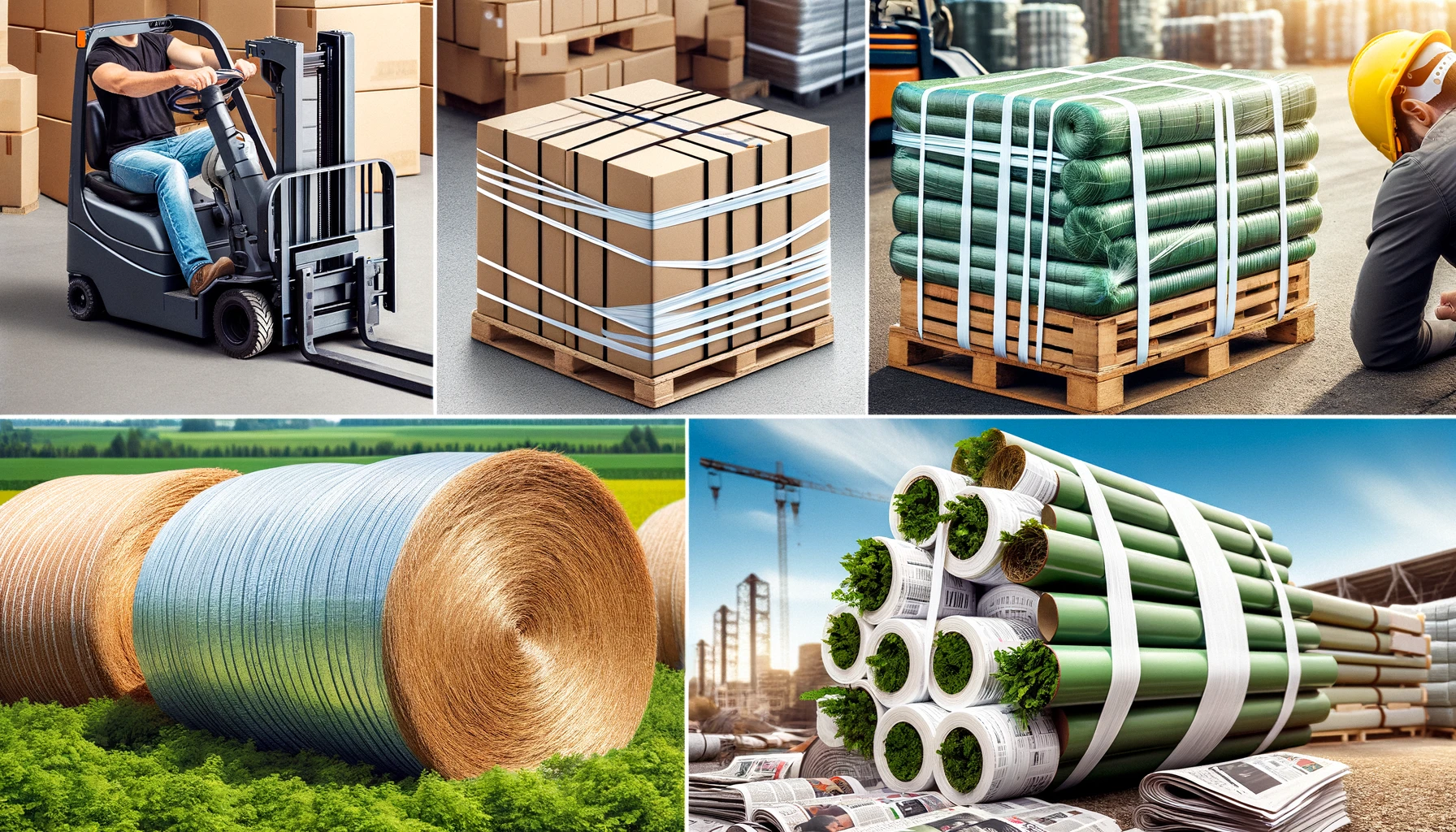In the world of logistics and packaging, plastic strapping has emerged as a game-changer. This seemingly simple product plays a critical role in securing goods during transport, ensuring safety, stability, and efficiency. But what exactly is plastic strapping, and why has it become such a vital component in various industries?
Understanding Plastic Strapping
Plastic strapping is a flexible and durable material used to bundle items together, securing them for storage or shipment. Typically made from polypropylene (PP) or polyester (PET), plastic strapping is favored for its high tensile strength, flexibility, and resistance to various environmental factors.
Types of Plastic Strapping:
- Polypropylene (PP) Strapping: Known for its light weight and cost-effectiveness, PP strapping is ideal for securing lighter loads. It is also highly resistant to splitting, making it a reliable choice for many applications.
- Polyester (PET) Strapping: PET strapping is much stronger than PP, offering higher tensile strength and better resistance to impact. It is commonly used for securing heavier loads and can withstand harsh environmental conditions.
Advantages of Plastic Strapping
1. Durability and Strength: Plastic strapping is renowned for its strength and durability. Unlike traditional materials such as steel, plastic strapping does not rust, corrode, or deteriorate over time. This ensures that goods remain securely strapped, even in adverse weather conditions.
2. Safety: One of the significant advantages of plastic strapping over steel strapping is safety. Steel strapping can be dangerous to handle, posing risks of cuts and injuries. Plastic strapping, on the other hand, is lightweight and easier to manage, significantly reducing the risk of accidents during application and removal.
3. Cost-Effective: Plastic strapping is generally more affordable than steel strapping. Its lightweight nature also reduces shipping costs, as it adds minimal weight to the packaged goods. Additionally, the reduced risk of injury translates to lower insurance and healthcare costs for businesses.
4. Versatility: Plastic strapping is incredibly versatile and can be used across various industries. From bundling newspapers and securing boxes to stabilizing large shipments of goods, plastic strapping can adapt to numerous applications, making it a go-to solution for many businesses.
5. Environmental Impact: With growing concerns about environmental sustainability, plastic strapping has made significant strides in becoming more eco-friendly. Many plastic strapping products are now made from recycled materials and are fully recyclable themselves. This helps reduce the carbon footprint and promotes a circular economy, where materials are continuously reused and repurposed.
Applications of Plastic Strapping
The versatility of plastic strapping means it is used in a wide range of industries:
1. Shipping and Logistics: Plastic strapping is essential in securing goods on pallets, ensuring that they remain stable and intact during transport. It helps prevent shifting and damage, reducing the risk of product loss and enhancing overall efficiency.
2. Construction: In the construction industry, plastic strapping is used to bundle and secure materials such as pipes, lumber, and steel rods. Its durability ensures that these materials are safely transported and stored.
3. Agriculture: Plastic strapping is used in agriculture to bundle produce, secure bales of hay, and support growing plants. Its resistance to moisture and UV rays makes it ideal for outdoor use.
4. Manufacturing: Manufacturers use plastic strapping to secure finished products, components, and raw materials. It helps streamline the production process and ensures that items are ready for distribution.
5. Retail: Retailers rely on plastic strapping to bundle items, secure boxes, and prepare goods for shipment. Its flexibility and strength make it an indispensable tool in the retail supply chain.
Future Trends in Plastic Strapping
As industries continue to evolve, so too does the technology and innovation behind plastic strapping. Here are some emerging trends:
1. Biodegradable Strapping: Researchers are developing biodegradable plastic strapping made from natural materials such as cornstarch. This innovation aims to reduce the environmental impact of plastic strapping, offering a sustainable alternative that decomposes naturally over time.
2. Smart Strapping: The integration of smart technology into plastic strapping is on the horizon. This could include strapping embedded with sensors to monitor tension, temperature, and humidity, providing real-time data to ensure optimal conditions during transport.
3. Enhanced Recycling Programs: Efforts are being made to improve recycling programs for plastic strapping. By increasing the availability of recycling facilities and raising awareness about the recyclability of plastic strapping, the industry aims to minimize waste and promote a circular economy.
Conclusion
Plastic strapping has proven to be an indispensable tool in the packaging and logistics industry. Its strength, durability, versatility, and cost-effectiveness make it a preferred choice for securing goods across various sectors. With ongoing advancements in sustainability and technology, plastic strapping is set to become even more efficient and environmentally friendly, solidifying its role as a critical component in modern logistics and packaging solutions. As businesses continue to prioritize safety, efficiency, and sustainability, the future of plastic strapping looks brighter than ever.

